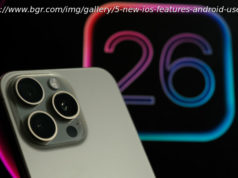Uber’s self-driving car program faced a major setback when one of its cars hit and killed a pedestrian Sunday night — but the program was struggling before the deadly accident. It appears Uber rushed| Techie World
Uber’s self-driving car program faced a major setback when one of its cars hit and killed a pedestrian Sunday night — but the program was struggling before the deadly accident.
“We believe that technology has the power to make transportation safer than ever before and recognize our responsibility to contribute to safety in our communities. So as we develop self-driving technology, safety is our primary concern every step of the way. We’re heartbroken by what happened this week…”
The fatal accident on Sunday night happened while a sole Uber operator was testing a self-driving Volvo in Tempe, Arizona, a suburb of Phoenix. Elaine Herzberg, 49, crossed in the middle of the road while walking a bicycle and was hit. The vehicle did not appear to sense her presence or make an attempt to stop. The driver also did not intervene. The woman later died at the hospital. The crash is under investigation.
Uber’s autonomous car program was running in Toronto, Pittsburgh, San Francisco, and the Phoenix area up until Monday and was ramping up mileage testing in Phoenix where lax regulations made for a prime testing ground. An Uber spokesperson confirmed Friday all testing is still paused following the crash.
Uber’s self-driving program was putting in a lot of self-driving miles: It hit 1 million miles after its first year, then 2 million total miles in September, which was only 100 days after announcing the first million. It hit 3 million miles in an even shorter amount of time more recently.
Additionally, Uber was gunning for a December approval for a self-driving car service available to the public in Arizona.
But that pales in comparison to Uber’s main competitor. Google’s Waymo clocks in almost 5,600 miles until human intervention in California. GM’s Cruise went 1,200 miles per intervention also in California.
Uber counters that MPI is not a safety measurement and can be used out of context. For a car testing in a urban, snowy environment intervention rates will differ compared to a sunny drive on a straight stretch of highway. There’s no standard definition of “intervention” throughout the autonomous car industry.
At the end of last year, Uber switched to one operator from two per vehicle. Previously, a second operator had sat on the passenger side collecting feedback into a laptop. The driver seat operator was always the main person in charge of safety. Now the solo operator takes on all duties during testing.
Uber said the decision to pare down to one operator came after more than a year of review and that the company worked with operators in the transition. In some situations two operators are still used.
With Uber hitting the brakes hard on any testing as authorities investigate the crash, its self-driving future is even more in peril.






